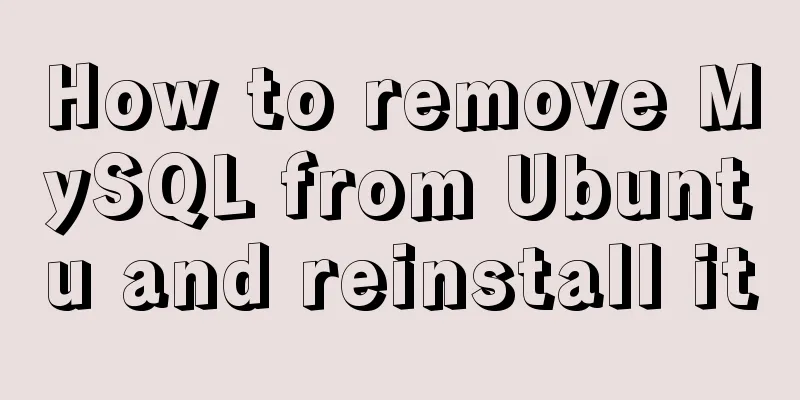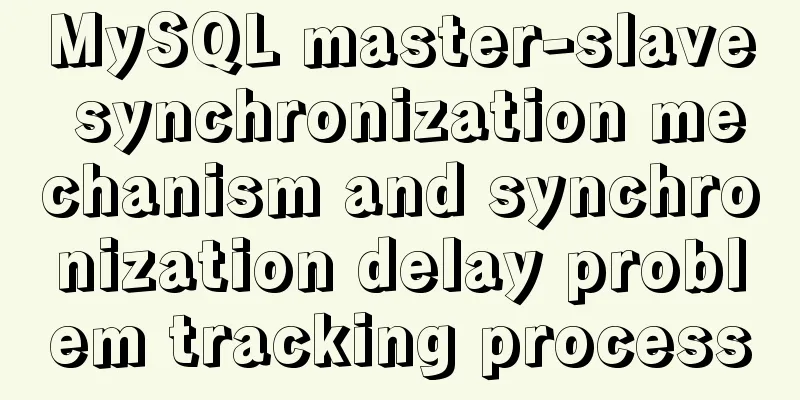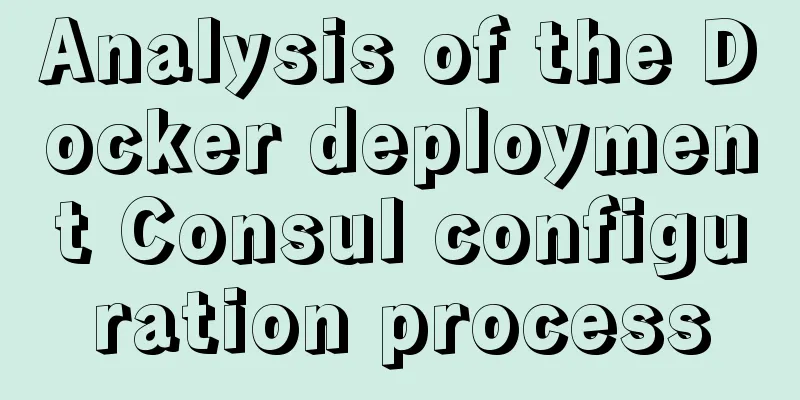How to remove MySQL from Ubuntu and reinstall it

|
First delete mysql: Then clean up the remaining data A dialog box will pop up, just select yes. Then install mysql You will be prompted to set a root password during installation. If you do not clean up residual data during uninstallation, you will not be prompted to set a root password. Check if mysql is running Generally, it will run automatically after the installation is complete. If it is not running you can Summarize The above is the method I introduced to you to remove MySQL from Ubuntu and reinstall it. I hope it will be helpful to you. If you have any questions, please leave me a message and I will reply to you in time. I would also like to thank everyone for their support of the 123WORDPRESS.COM website! You may also be interested in:
|
<<: Building a KVM virtualization platform on CentOS7 (three ways)
>>: Summary of the use of three for loop statements in JavaScript (for, for...in, for...of)
Recommend
15 Best Practices for HTML Beginners
Here are 30 best practices for HTML beginners. 1....
JavaScript singleton mode to implement custom pop-up box
This article shares the specific code of JavaScri...
Define your own ajax function using JavaScript
Since the network requests initiated by native js...
Detailed summary of MySQL and connection-related timeouts
MySQL and connection related timeouts Preface: To...
Linux file system operation implementation
This reading note mainly records the operations r...
MySQL complete collapse: detailed explanation of query filter conditions
Overview In actual business scenario applications...
Linux uses bond to implement dual network cards to bind a single IP sample code
In order to provide high availability of the netw...
uniapp Sample code for implementing global sharing of WeChat mini-programs
Table of contents Create a global shared content ...
Summary of 6 Linux log viewing methods
As a backend programmer, you deal with Linux in m...
Uninstalling MySQL database under Linux
How to uninstall MySQL database under Linux? The ...
MySQL 8.0.11 Community Green Edition Installation Steps Diagram for Windows
In this tutorial, we use the latest MySQL communi...
How to use port 80 in Tomcat under Linux system
Application Scenario In many cases, we install so...
Example of using MySQL to count the number of different values in a column
Preface The requirement implemented in this artic...
Typical cases of MySQL index failure
Table of contents Typical Cases Appendix: Common ...
Detailed steps for debugging VUE projects in IDEA
To debug js code, you need to write debugger in t...









